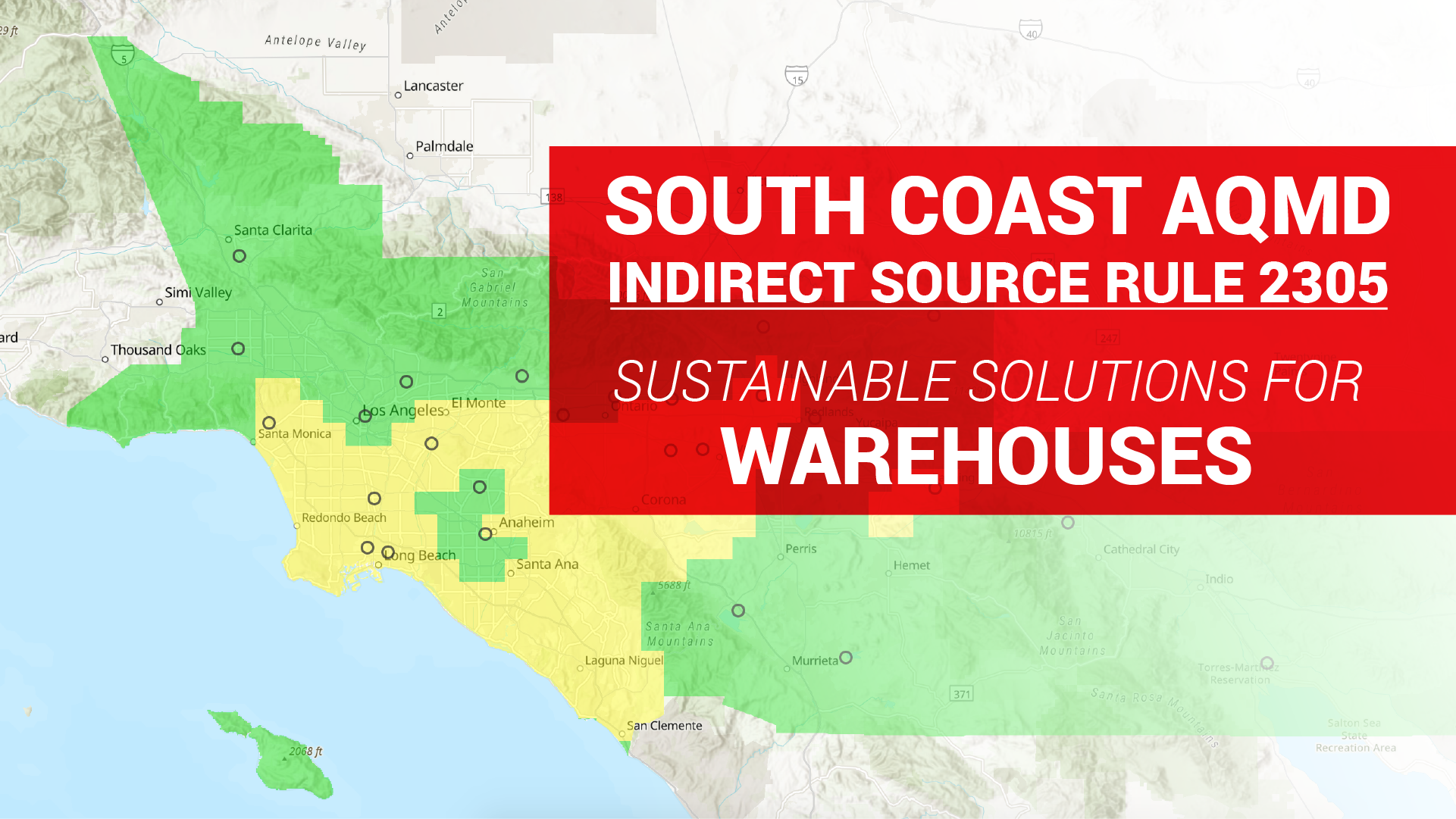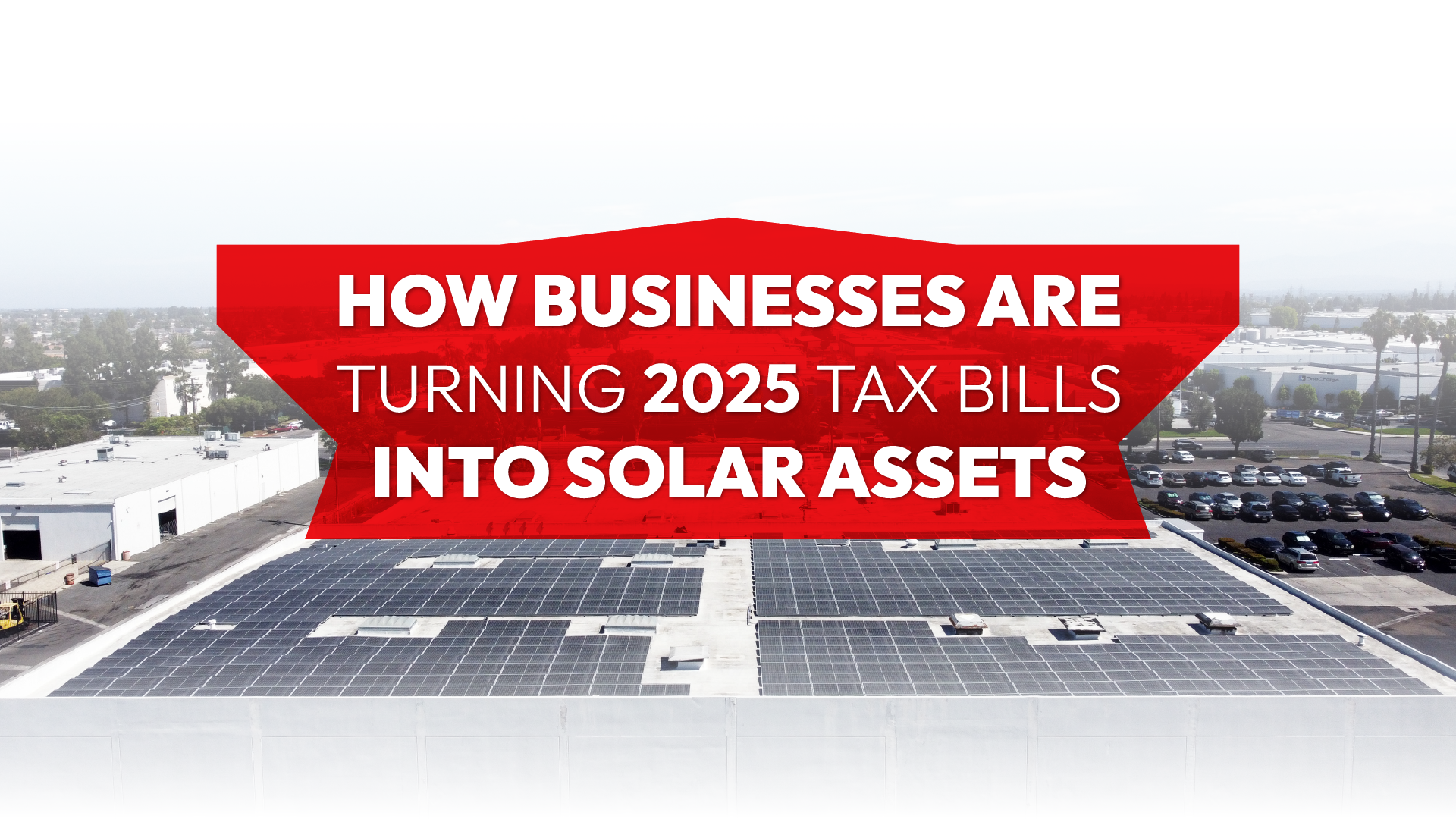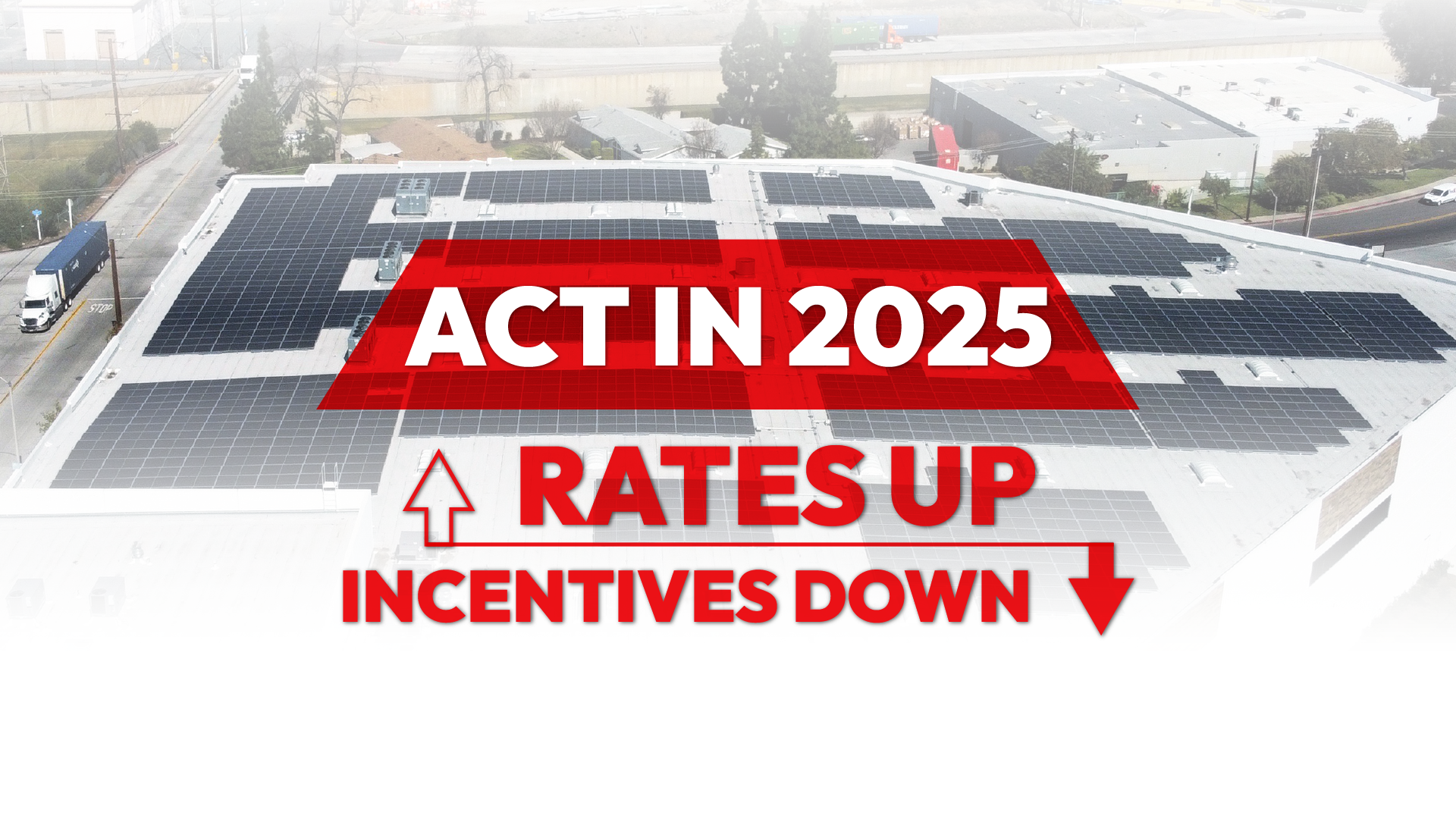Solutions for California Warehouses Facing SCAQMD ISR 2305
South Coast Air Quality Management District's Indirect Source Rule 2305
In 2021, the South Coast Air Quality Management District (SCAQMD) introduced the new Warehouse Indirect Source Rule (ISR). WAIRE Program Rule 2305 has Southern California warehouse owners and operators adapting to costly new regulations aimed at offsetting indirect emissions. To avoid significant fees, warehouse facilities over 100,000 square feet must adopt renewable technology like commercial solar, energy storage and/or EV charging stations. Implementing sustainable solutions reward point values that go towards reducing fees.
EV Charging Stations (EVCS) for fleet vehicles earn the highest points in most cases. However, EVCS solutions create a spike in energy usage, increasing energy costs and adding significantly more cost than the technology alone. Combining EVCS with commercial solar and/or energy storage will earn more points towards reducing fees, as well as providing free electricity for the EVCS. Within reason, this combination is the only economically viable option for reducing AQMD annual fees.
These technologies work together, creating a sustainable warehouse retrofit that helps competitively offset the indirect emissions generated from trucks on the road transporting goods, and ensures long-term compliance with ISR 2305.
Southern California Warehouse Compliance to ISR 2305
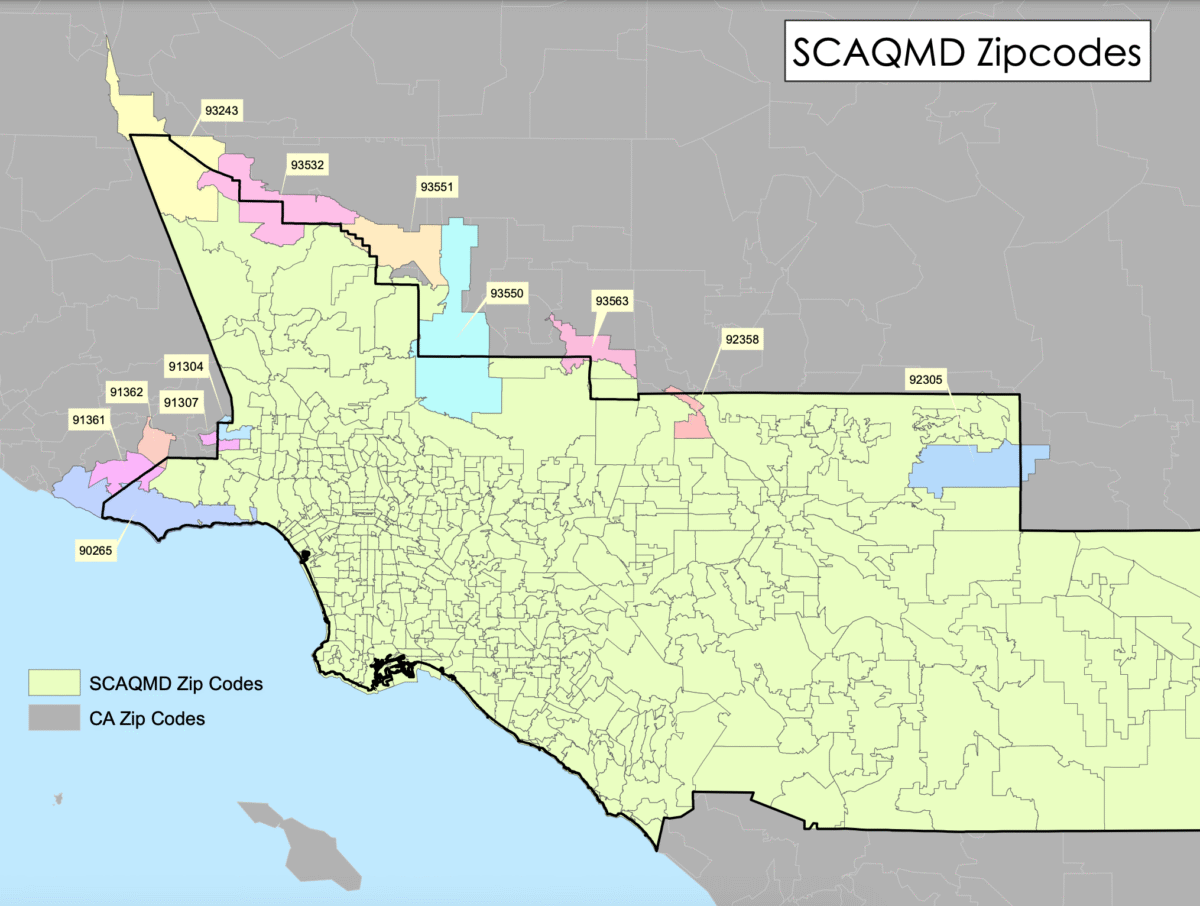
South Coast Air Quality Management District (SCAQMD) adopted Indirect Source Rule 2305 (ISR 2305) on May 7, 2021, affecting approximately 4,000 warehouses in the South Coast Air Basin, with an estimated total compliance cost of $979 million per year. In 2022, this regulation requires compliance from warehouses 250,000 square feet or more, phasing in properties with 150,000 square feet or more starting 2023 and 100,000 square feet or more in 2024.
SCAQMD’s service area covers most of Los Angeles, Orange, Riverside, San Bernardino counties. Facility owners of at least 50,000 square feet were required to submit a Warehouse Operations Notification (WON) to SCAQMD by September 1, 2021, including contact details, duration of current lease term, along with size and square footage used for warehousing activities.
Avoiding Costly Fees Through WAIRE Points Calculated by WATTs
Warehouse operators are now required to earn points, Warehouse Action and Investments to Reduce Emissions (WAIRE) points from emission-reducing activities, otherwise they are obliged to pay mitigation fees based on the total NOX and PM10 emissions. This can be extremely costly and will quickly add up if WAIRE points aren’t earned to offset those indirect emissions.
The number of WAIRE points that a warehouse operator is required to earn annually is based on Weighted Annual Truck Trips (WATTs). WATTs will be calculated based on verifiable truck trip data collected by the warehouse operator. If this data is unavailable, WATTs will be calculated based on the number of operational days and the warehouse size. WAIRE points can be earned through completing specific actions from the WAIRE Menu, completing an approved Custom WAIRE Plan, or the costly option of choosing to pay a mitigation fee of $1,000 per WAIRE point.
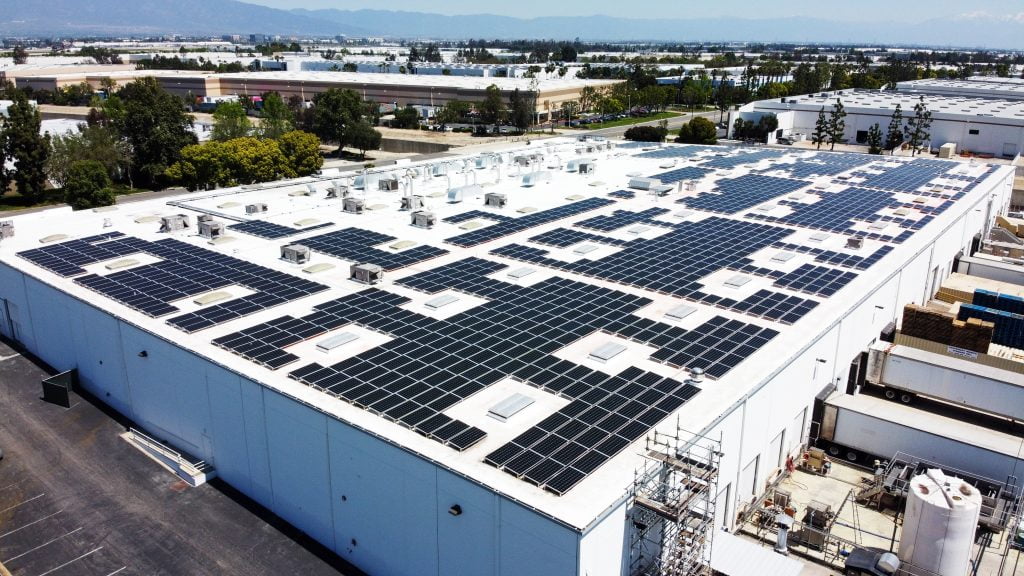
AQMD provides a calculator document here to help determine the point value of these potential solutions while factoring in any warehouse facilities’ WATTs;
- Acquire ZE or Near-Zero-Emission (NZE) Trucks
- Visits from ZE/NZE Trucks
- Acquire & Use ZE Yard Truck
- Install & Use Onsite Zero-Emission (ZE) Charging or Fueling Infrastructure
- Install, Energize & Use Onsite Solar Panels
Create Cash Flow and Consistently Earn WAIRE Points
The core goal of Rule 2305 is to reduce emissions from transportation, so the quickest way to earn the most WAIRE points is by purchasing zero or near zero emission trucks to replace diesel trucks. This earns a significant point total, but WAIRE points only last 3 years after they’re earned, meaning that it is very important to determine how a warehouse will continuously earn points to retain compliance and avoid fees.
While ZE trucks continue to earn points for yearly trips, this alone does not earn enough. The example below, provided by Rush Enterprises, shows how a typical warehouse facing WAIRE compliance would have to pay mitigating fees as soon as 2024, with annual obligations increasing to as much as $234,000 by 2026.
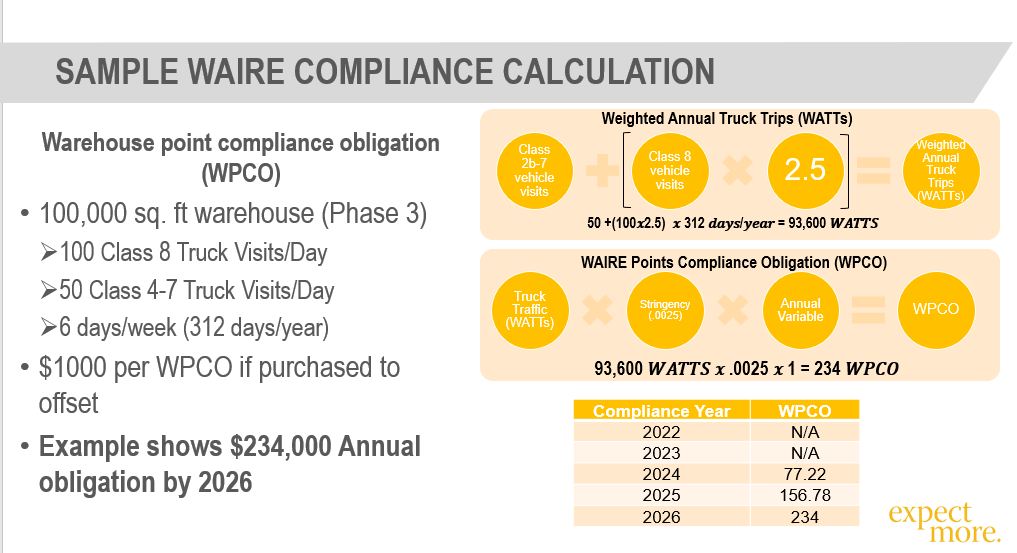
However, annual solar production and EV charger usage deliver significant WAIRE points for electricity used per kilowatt hour. Scaling to the facilities’ usage, an EV charger powered by rooftop solar and supported by an energy storage system will simultaneously earn more than enough WAIRE points for Indirect Source Rule 2305 compliance and reduce electricity costs while avoiding future rising rates.
Revel Energy has experience installing a wide variety of sustainable energy solutions for California businesses, contact us today to learn how your warehouse facility can reduce electricity costs and comply to SCAQMD ISR 2305 by earning WAIRE points with commercial solar, energy storage and EV charging stations.
Commercial grade rooftop solar is ideal for: manufacturing, warehousing, logistics, industrial, retail, hospitality buildings and more with over 10,000 sq. ft. rooftops.
CARPORT SOLAR
Free standing carport solar generates added solar power for properties with limited rooftop space. Added benefits include shading and protection for employees vehicles.
Crucial for reducing peak demand charges. Automated to supply electricity when your panels won’t. Energy storage is ideal for businesses that incur significant peak charges.
As the popularity of electric vehicles increase, so does the demand for on-site charging. This sustainable amenity has become a parking lot fixture for competitive employers.
OUR SERVICES
TURNKEY COMMERCIAL GRADE SOLAR, ENERGY STORAGE, LED LIGHTING AND MORE.
PROFESSIONAL GUIDANCE
CUSTOM TAILORED PLANNING
CONSTRUCTION & INSTALLATION
CSLB #1106092
Client Testimonial: Kelemen Company
Corporate Business Park in Irvine, CA has created significant electricity cost savings through commercial solar installed across the 5-building business park.
Client Testimonial: Tice Gardner & Fujimoto LLP
See how this CPA firm saved on electricity and gained valuable tax credits through commercial solar that they used to keep cash in the businesses.

